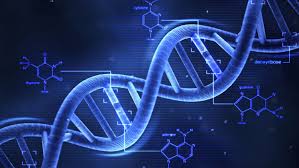Chargaff's rules:- One other key piece of information related to the structure of DNA came from Austrian biochemist Erwin Chargaff. Chargaff analysed the DNA of different species, determining its composition of A, T, C, and G bases. He made several key observations: A, T, C, and G were not found in equal quantities (as some models at the time would have predicted) The amounts of the bases varied among species, but not between individuals of the same species The amount of A always equalled the amount of T, and the amount of C always equalled the amount of G (A = T and G = C) - Purines always equal to pyrimidine . ( A+G = T+C ) - MOLAR RATIO BETWEEN PURINE AND PYRIMIDINE IS ALWAYS 1 (1:1) - BASE RATIO IN DNA ( A+T/G+C ) IS ALWAYS FIXED IN A SPECIES BUT DIFFERENT IN DIFFERENT SPECIES . In Prokaryotes = < 1 ( less than 1 ) In Eukaryotes = > 1 ( more than 1 ) These findings, called Chargaff's rules, turned out to be crucial to Watson a...





